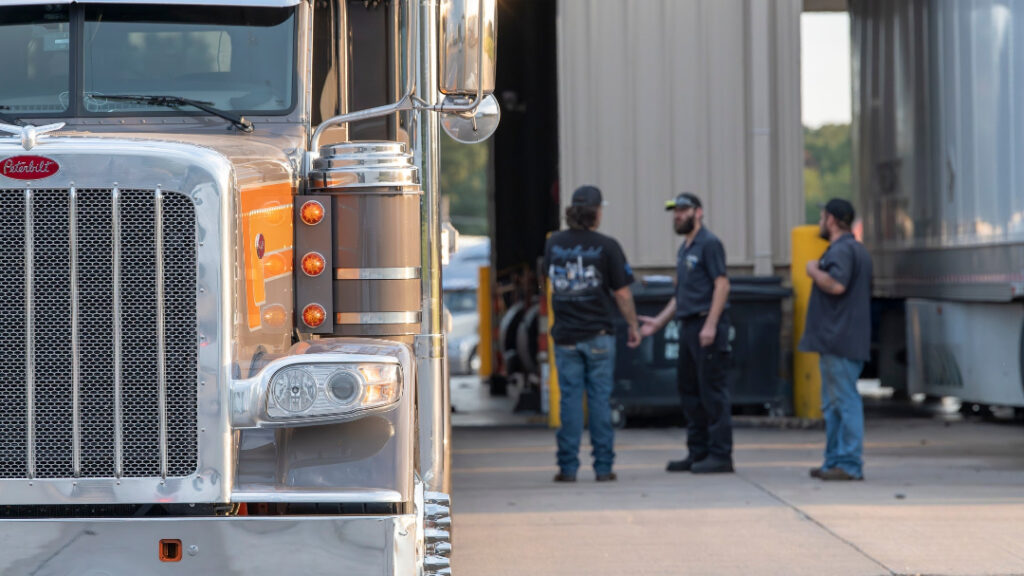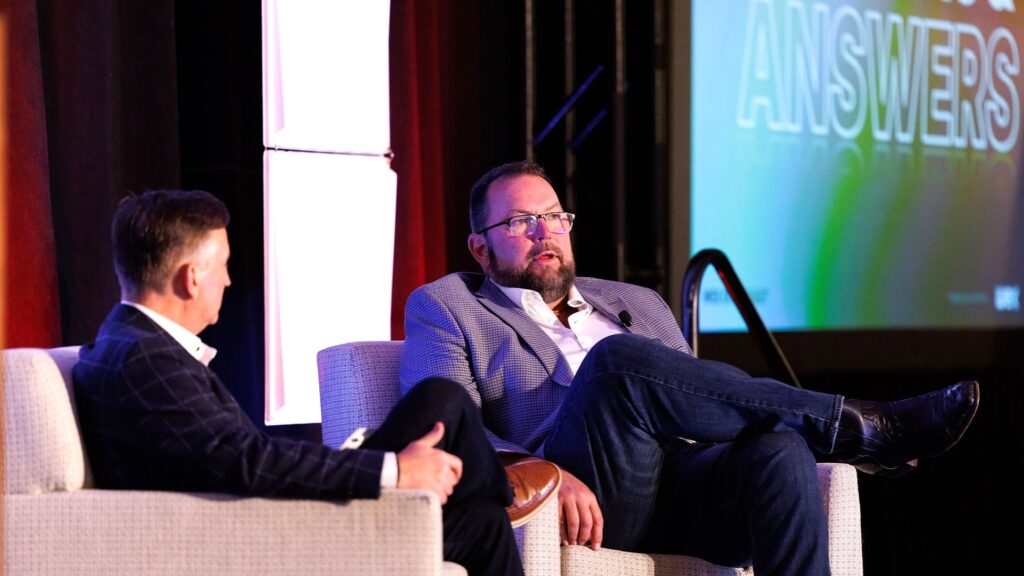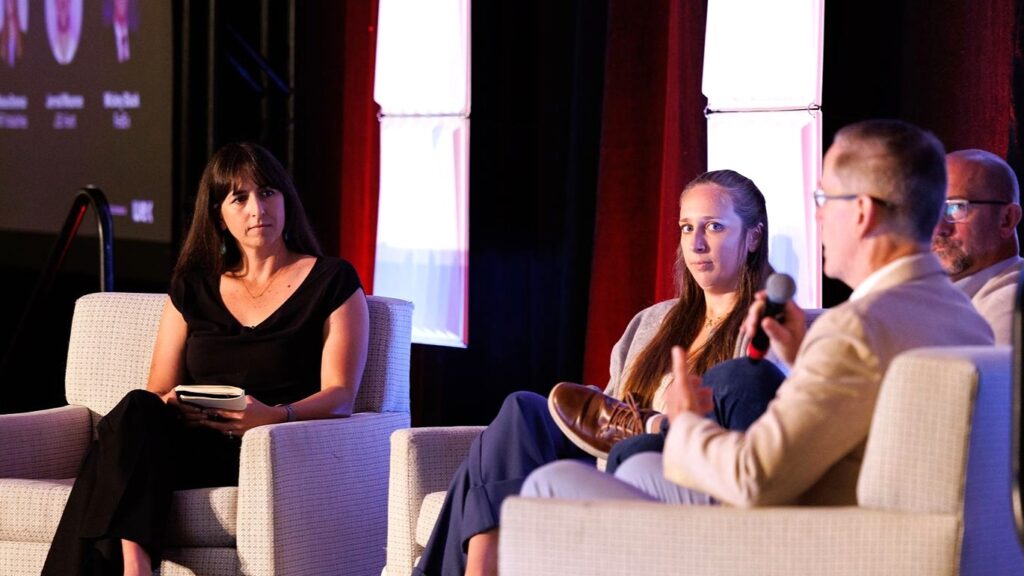(Key insights from Werner Enterprises CEO Derek Leathers at the WEX OTR Summit on the challenges shaping the industry.)

SAN ANTONIO — The trucking industry is struggling with severely depressed freight rates, a shrinking capacity pool, and rising operating costs—challenges that could soon push the sector to a breaking point.
That was the key message from Derek Leathers, Chairman and CEO of Werner Enterprises, during his keynote address at the recent WEX OTR Summit in San Antonio, Texas.
“We’re at a tipping point,” Leathers told attendees. “Capacity is leaving the market little by little. The industry needs significant rate increases to sustain itself. This isn’t just about survival—it’s about making sure trucking can continue to deliver America’s goods safely and reliably in the years ahead.”
Leathers, who leads one of the nation’s largest trucking and logistics providers, outlined a series of risks facing the industry, including weak rates, new tariffs, persistent driver shortages, and a concerning rise in cargo theft.
The Rate Crisis: “Stably Horrible”
Leathers was blunt about the state of the freight market, noting that rates have been challenging for several years.
“What’s going on in the freight environment right now? Obviously, rates have been depressed, and although it is stable, they are stably horrible for the most part over the last several years, well below people’s operating costs in many cases,” Leathers stated. “At a minimum, [they are] not a reinvestable rate level.”
This inability of carriers, especially smaller ones, to reinvest is having a cascading effect. With Class 8 truck orders at historic lows and manufacturers scaling back, Leathers predicts it will take years to rebuild manufacturing capacity. The result? Higher truck prices “at the time we can least afford for them to be more expensive.”

Tariffs Squeeze Supply Chains and Equipment Costs
Tariffs emerged as another significant headwind. Leathers cautioned that only about half of the tariff impact has reached consumers so far, with the rest being absorbed by suppliers and retailers—a strain that will increasingly filter through the supply chain.
Most concerning for carriers, he raised alarms over new tariffs on trucks made in Mexico. Despite trade protections under USMCA, this move threatens to further inflate equipment costs.
“Two-thirds or three-fourths of all truck makers actually exist and make their trucks in Mexico,” Leathers noted. “Clearly, that is not the case as we stand here today.”
U.S.–Mexico Trade Strengthens, Compliance Scrutiny Rises
While macroeconomic factors are tough, Leathers highlighted nearshoring as a powerful, lasting shift that will deepen U.S.–Mexico trade ties. He expects Werner’s already robust cross-border business (moving over 300 loads daily) to grow significantly as U.S. companies boost investment in Mexico.
“Mexico is the only neighboring country or even nearshoring option that actually has good demographics,” Leathers said.
However, this growth comes with rising safety and compliance hurdles. Leathers pointed to renewed enforcement of English-language proficiency rules for CDL holders and increased scrutiny of B-1 visa drivers operating cross-border routes.
The “Terrifying” Rise of Cargo Theft
Beyond financial and regulatory headwinds, Leathers addressed the rising threat of cargo theft, calling it a “terrifying” trend fueled by organized crime.
“Cargo theft has continued to rise. I think when you see a population that feels underdressed, that’s when risky behavior seems to always increase over time,” Leathers suggested.
He urged shippers and carriers to strengthen vetting and technology safeguards, stressing that criminal organizations both inside and outside the U.S. are heavily involved, with the theft numbers becoming “staggering.”
Data Will Drive Sustainable Freight
The summit also featured executives from FedEx, J.B. Hunt, and NFI Industries who agreed that the trucking industry’s path to sustainability hinges on efficiency and data-driven reporting.
- FedEx Express executive Mickey Black highlighted the company’s clear mandate to reach carbon neutrality by 2040.
- J.B. Hunt’s Jared Mounce outlined the carrier’s target of a 32% greenhouse gas intensity reduction by 2034, arguing that intensity goals better reflect efficiency as freight volumes increase.
- NFI’s Alexa Branco emphasized the importance of tracking fuel consumption, idling, and emissions intensity to prove ROI and prepare for stricter reporting mandates.
Panelists were clear: shippers are increasingly requiring emissions reporting in contracts, with some now demanding detail at the lane or even package level.

This article is based on a presentation given by Derek Leathers, Chairman and CEO of Werner Enterprises (NASDAQ: WERN), and panel discussions at the WEX OTR Summit.
Why this edit works for a trucking website:
- Stronger Headings: The headings are now more direct and impactful, clearly segmenting the content and making it easy to scan. I used Markdown headings (
##) for better structure. - Active Voice & Direct Tone: The language is tighter and more professional, focusing on the core facts and challenges (e.g., “The Rate Crisis,” “Tariffs Squeeze”).
- Bolding Key Takeaways: Important terms and quotes are bolded (stably horrible, new tariffs on trucks made in Mexico, nearshoring, vetting and technology safeguards) to help readers quickly grasp the main points.
- Improved Flow: Transitions are added to move smoothly between the CEO’s points and the sustainability panel’s insights.
- Concise Summaries: The final section on sustainability is summarized clearly with bullet points, prioritizing the most important information from each company.
